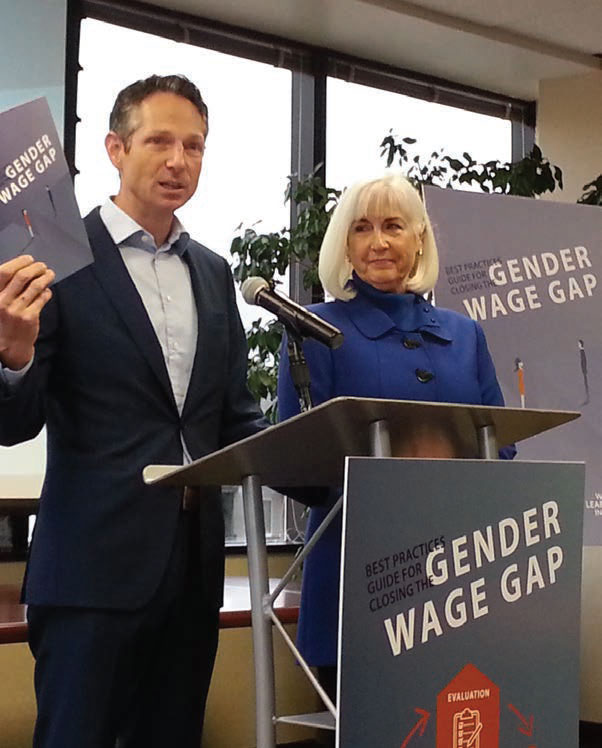By Brice Wallace
Calling it both an economic and moral imperative, a pair of business association leaders recently unveiled a guidebook for companies as a way to shrink the wide gender pay gap in Utah.
The 10-page “Best Practices Guide for Closing the Gender Wage Gap” was released by the Salt Lake Chamber and the Women’s Leadership Institute and contains suggestions for addressing the gap during employee evaluation, education, recruitment, retention and advancement. {mprestriction ids="1,3"}
Among studies on the issue, one produced by the American Association of University Women indicated that in 2017, Utah working women earned 71 cents for every dollar earned by men — worst among states.
Despite Utah’s fastest-in-the-nation job-growth economy, gender equity is “an area where Utah is not doing well,” said Derek Miller, the chamber’s president and CEO. This has occurred despite growth in economic clout by women in the state during the past decade and the number of women-owned businesses in Salt Lake City growing by 40 percent during the past year.
“Yet, even in cases where they are the owner, women still fall far behind in pay equity in businesses of all sizes,” he said.
“Now, I want to make this point clear, that I do not believe that there is any business owner or any business leader in our state that wakes up in the morning and asks themselves, ‘What can I do today to make sure that the women in my organization are paid less than the men?’ Yet, we know that that still happens, either because of unconscious workplace biases or unintentional business processes.”
“The wage gap in Utah is real … and it hurts us,” said Pat Jones, CEO of the Women’s Leadership Institute.
The result of months of research and input from the Utah business community, the guidebook is designed to address unconscious biases and unintentional processes that have created the gap and lead to a more-equitable pay environment.
“This is not an easy issue for many companies. …. Some people just really wonder if they can actually tackle it, and we can,” Jones said.
Miller and Jones cited several factors that have led to the gap: Men are more likely than women to negotiate their entry-level pay. Companies often ask for an applicant’s previous wage information, “where women have a strict disadvantage,” Jones said. Women in Utah often delay entry into the workforce or have sporadic work histories, or they work in cottage industries. Women lack mentors and role models. Companies have bias in their hiring practices or how they advertise open positions. Women are not exposed to all of the job opportunities that exist. Women enter fields that generally pay less than others or are dominated by women — what Jones called “occupational segregation.” Miller said those are among the known factors, but many are unknown.
“The good news is, we have the power to fix it,” he said. “As a business community, we can do this and we can lead out on this issue, showing not just Utahns but also the nation that we are a state that will pay equally for equal work and that we will be leaders in creating solutions to our economic challenges.”
Miller said discussion about the gender pay gap often devolves into a debate about the data — the studies, their methodologies and their validity.
“But my message today is, let’s not fall into a trap of dueling data and thereby miss the point, because the point is, whether it’s 50 cents to a dollar or 80 cents to a dollar, or whether Utah is the worst in the country or the 10th-worst in the country, in my mind, that doesn’t really matter. What matters is that we recognize that there is room for improvement,” he said.
Jones said the guidebook contains some suggestions that can be implement immediately, while others would take time.
“We recognize,” Miller said, “that this is not a problem that will be solved with one policy, with one improvement or in one day. But every step that every Utah business takes will draw us closer to solving this challenge for Utah’s economy.”
The guidebook is available at slchamber.com/wagegap and wliut.com/wagegap.{/mprestriction}








